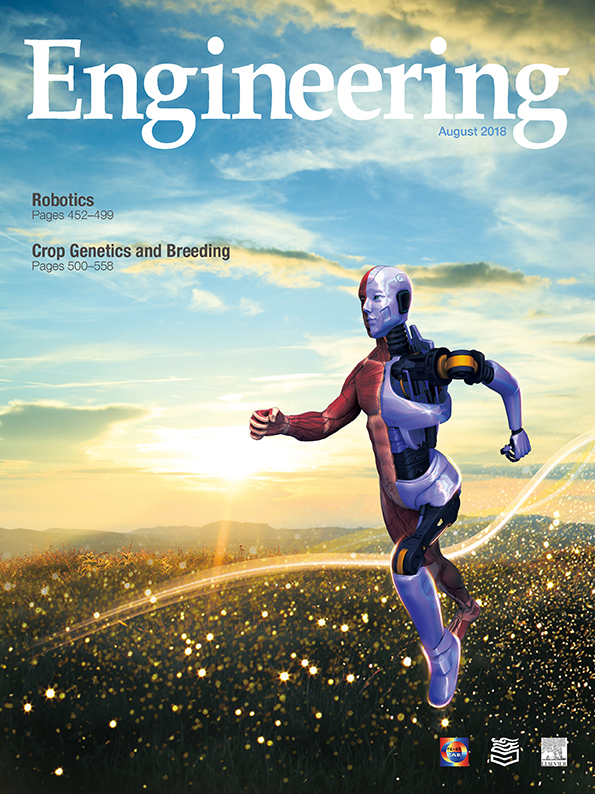Over any given two-year period, three prestigious engineering prizes are awarded by three engineering academies worldwide. The most recent is the Millennium Technology Prize awarded on May 22,2018 by the Technology Academy Finland[1]. On February 20,2018 the Charles Stark Draper Prize for Engineering (hereinafter Draper Prize) was awarded by the National Academy of Engineering of the United States[2]. And, the Queen Elizabeth Prize for Engineering (hereinafter QEIIPrize), as selected by the UK Royal Academy of Engineering, was awarded on February 1,2017[3]. Each of these prizes is an international prize, each celebrates out-standing engineering achievements of living persons, each is an omnibus prize, not limited to any particular field of engineering, they all celebrate the contribution of engineering to improving the human condition and each intends to excite the next generation of students to consider an engineering education and engineering career.
The 8th Millennium Technology Prize of 1 million Euros was awarded to Dr.Tuomo Suntola for the development of atomic layer deposition (ALD) technology, which allows creation of nanoscale thin films essential to the manufacture of ubiquitous microelectronic devices such as microprocessors and digital memory devices. Suntola started the development of ALD for electroluminescent displays in 1974 at the Finnish company Instrumentarium Oy and, in 1987, started Microchemistry Ltd. as a subsidiary of Neste Oy to apply ALD to microelectronic devices.
The 22nd Draper Prize of 500 000 USD was awarded to Dr.Bjarne Stroustrup, managing director in the technology division, Morgan Stanley,for conceptualizing and developing the C++programming language. This work was largely accomplished during Stroustrup’s tenure at Computer Science Research Center of AT&T Bell Labs in Murray Hill, New Jersey, from 1985 to 2002. C++ revolutionized the software industry and remains today among the most widely used programming languages.
The 3rd QEIIPrize of 1 million pounds was awarded to Eric Fossum, George Smith, Nobukazu Teranishi, and Michael Tompsett collectively for digital imaging sensors which revolutionized our digital world. Eric Fossum is a professor of engineering at Dartmouth. During his previous stint at the US National Aeronautics and Space Administration (NASA) in the 1990s, he developed the complementary metal-oxide semiconductor (CMOS) active pixel image sensor and the camera-on-a-chip CMOS image sensor. Dr.George Smith of AT&T Bell Labs (retired) developedthe original concept of the charge-coupled device (CCD) in 1969. He shared the 2006 Draper Prize for the CCD with Willard Boyle, now deceased.Professor Nobukazu Teranishi developed the pinned photo diode at NEC Corporation, where he worked from 1978 to 2000. Dr.Michael Tompsett ran the AT&T Bell Labs CCD group in the 1970s and with his team developed a series of CCD cameras and produced the first pixel CCD color image in 1973.
The next phase in the two-year cycle of these engineering awards will be award of the 4th QEIIPrize in 2019.
Each of the awards likes to think of itself as the Nobel Prize for engineering. The panels which select the winning achievement and the individuals responsible operate independently of one another, but,unlike the discipline specific panels of the Nobel Prizes, they survey the same ground. As such, multiple awards in a similar area sometimes appear, albeit the achievement is typically framed differently. And, since engineering achievements frequently require a real or virtual team effort,the cast of those considered key contributors can vary in the opinion of different panels. Depending on ones point of view, having three separate awards may be thought to dilute or enhance their impact—fragmenting attention vs. raising awareness of engineering repetitively. But, the good news from the viewpoint of awardees is that they can win all three, a distinction which presently belongs to Professor Robert Langer of Massachusetts Institute of Technology (MIT) for controlled drug release technology and Dr.Tim Berners-Lee for the World Wide Web.Professor Frances Arnold of California Institute of Technology (Caltech) won the 2011 Draper Prize (with Willem P.C.Stemmer)and the 2016 Millennium Technology Prize for directed evolution and is the only woman to have won any of the prizes[4].













 京公网安备 11010502051620号
京公网安备 11010502051620号




